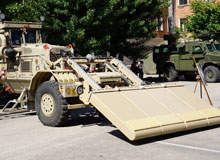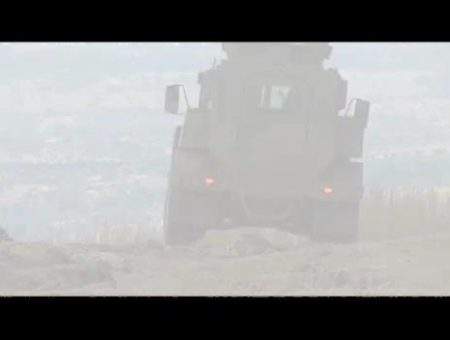RSD Secures a Further VMMD Order from US
RSD has secured a further follow on order for the supply of Vehicle Mounted Mine Detection (VMMD) systems, also known as the Chubby System, to the US Army.
Further orders are anticipated from the US Army, US Marine Corps and other end users during the course of 2012 and possibly beyond. The current contract follows the recent award of full material release to the VMMD program team elevating the VMMD to the prestigious Program of Record status within the US Army.
The contract has been awarded through US-based company Critical Solutions International, CSI, who is RSD’s international partner. Together RSD and CSI have been a consistent reliable resource to the US Army for the successful acquisition, testing, development and production of numerous mine detection vehicles and systems from South Africa.
The VMMD systems ordered by the US Government will supplement those already in use and deployed with the US Army and US Marine Corps, which have already saved thousands of US soldiers and civilian lives.
The South African made Husky forms the core of the VMMD and is a unique landmine detection vehicle that is blast survivable, capable of over passing pressure fused landmines. It is almost instantaneously repairable in the field, due to the fact that it breaks apart in a predictable fashion in the event of a detonation, differentiating it from other landmine detection systems and MRAP vehicles.
This vehicle has been combat proven in conflict situations in Africa, the Middle East, the Balkans and Asia since the early 1980s. In addition, it has successfully completed arduous and comprehensive testing conducted in South Africa and at the US Army’s Yuma proving grounds, Aberdeen proving grounds and the White Sands missile range.
Ongoing operations have expanded the Husky’s role beyond detecting and marking landmines. The Husky’s capabilities now include the detection of Improvised Explosive Devices (IED’s) and Explosive Formed Penetrators (EFP’s). The feature that differentiates the Husky from other mine detection systems is its ability to pass over pressure fused anti-vehicle landmines without detonating them.
In the event of a detonation, the vehicle components have been engineered in a unique modular configuration that will break apart in a predictable fashion. This feature facilitates fast in-field repairs and any damage to the system can usually be repaired in the field significantly increasing the uptime and system durability and at a lower cost than MRAP type vehicles.
The system clears a path three metres wide travelling at between 15km/h and 50 km/h depending on the nature of the terrain. The VMMD systems in service worldwide have collectively been subjected to thousands of landmines, IED or EFP strikes.
More sophisticated high sensitivity low metal content detectors, and alternative sensors like Ground Penetrating Radar (GPR) have now been operationalised and are being fitted to the Husky along with other devices such as the cyclone blower and robotic arms.
Since its inception in 1911, South African company RSD has established itself as a fully accredited, socially responsible, international systems house providing sustainable products and solutions for the transport and defence sectors by developing intellectual property in partnerships with governments, customers, suppliers and communities.



